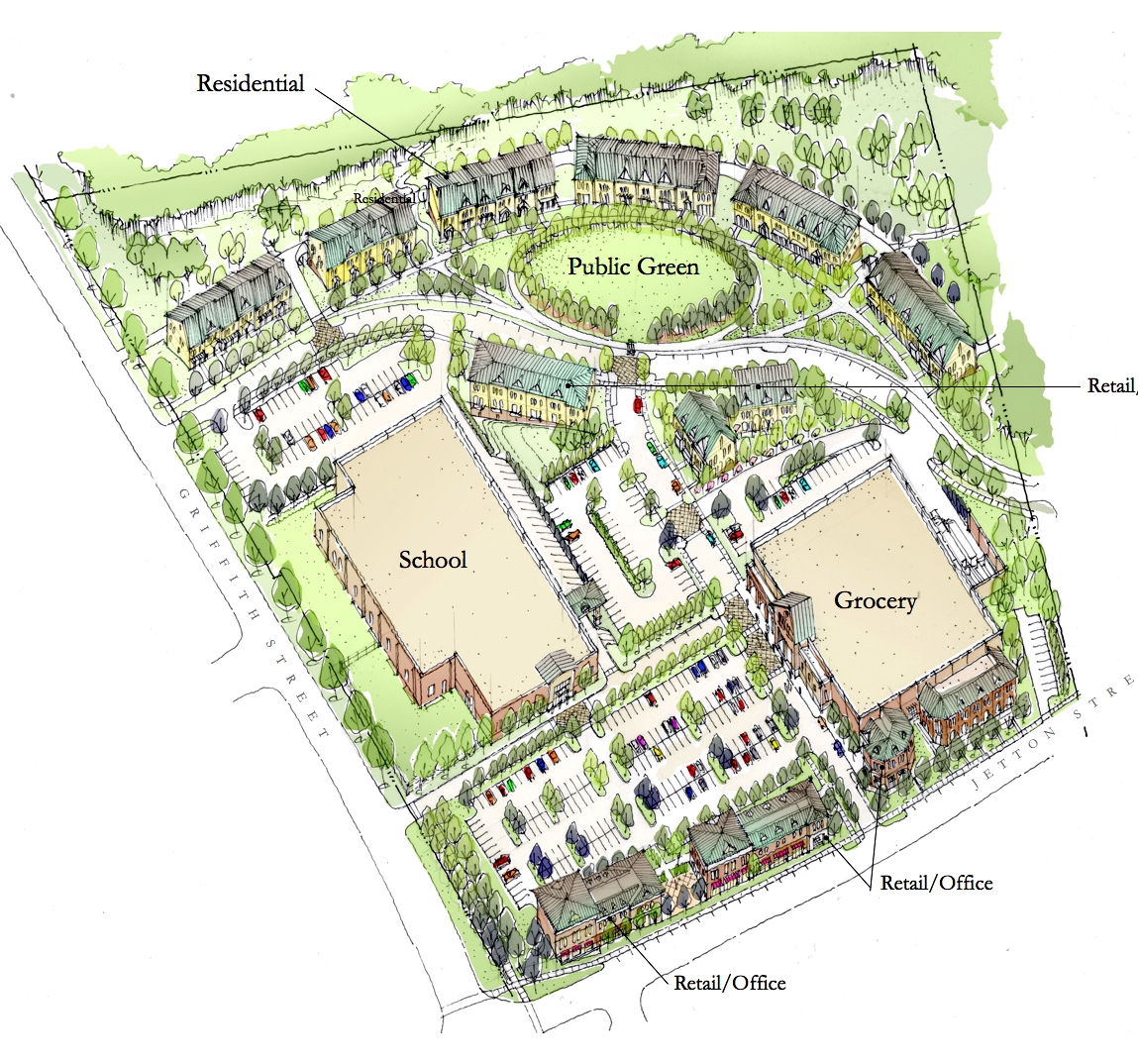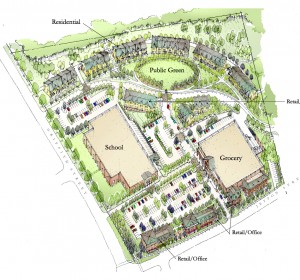Food for Thought: Big Box Design
Buzz around Easton about the potential Harris Teeter development has us thinking about interesting ways supermarkets and other large retailers build stores with the community and the environment in mind.
The U.S. Green Building Council’s Leadership in Energy and Environmental Design (LEED) program is a great place to start for a new construction retail store. The LEED Retail program focuses on exterior elements (such as stormwater management and modes of transportation) and interior elements (such as energy management systems, indoor air quality, and materials reuse). Harris Teeter already has multiple LEED-certified store, including a few in Maryland. Read more about for the specific case studies in Baltimore and Olney.
There are opportunities to help superstores contribute more to the community. Prioritizing walkability and connectivity is an important factor for many small towns. Some stores choose to do this by locating parking lots behind stores. Examples of this type of design in Easton include the Tidewater Inn, the former McCord building (soon to be the Eastern Shore Conservation Center), and the town office on South Harrison St. Without a giant expanse of parking space, pedestrians can more easily access shops and services.
Sharing parking with nearby retailers also requires less paving, saving money and opening up space for public green space. Instead of orienting a development toward cars, many retailers choose to make people the focus. Sidewalks can replace roadways for cars. Check out Denver’s approach and Davidson, North Carolina’s layout (below) for creating these types of developments and demonstrating how living streets are important for future commercial areas.
Photo courtesy of Little Consulting
Conserving some of this land would leave more open space, which is not only aesthetically pleasing but great for the environment! Reduced impervious surface cover (e.g., roads and parking lots) means less stormwater runoff after a big rain and less pollution in the Bay. Should Harris Teeter’s application get approved, there’s great potential for installing polluted runoff management features, such as a stormwater pond, native trees, and rain gardens.
And if you think a big box store isn’t capable of reducing its impact on the environment, just have a look at the Walmart Supercenter in South Euclid, Ohio and the Loblaw Superstore in Ontario, Canada. The LEED certified Walmart store uses energy-efficient lighting as well as HVAC systems, and delivered on its commitment to set aside a piece of land for public green space. The Loblaw Superstore is certified under Canada’s Green Building Council and is sustainable through and through: from the certified wood and recycled building materials it used to its intense recycling program that aims to keep 70% of its waste out of landfills.
Big retailers in a small town have a responsibility and a lot of potential to advance sustainability in the places that they inhabit. And with the case studies mentioned above, we’ve seen the great possibilities! Each big box site is different but that also means there is room for unique and creative solutions for minimizing a store’s carbon footprint. Easton deserves places and spaces that protect and enhance its character. Better Models for Development on the Eastern Shore provide a glimpse of alternative ways of designing and siting commercial development.
What are your ideas? How do you think superstores can use the land around them to adapt building practices and operate in a more eco-friendly manner? Let us know what you think in the comment section below or via Facebook and Twitter!
Note: ESLC does not currently support or oppose the development of Harris Teeter, but encourages reasoned discussion on the topic.








